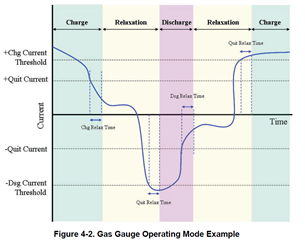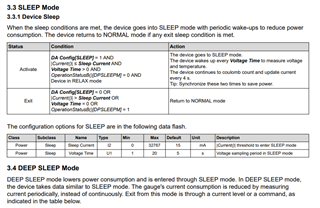Other Parts Discussed in Thread: BQSTUDIO
Hello to everyone I'm in the process of evaluating and selecting the right fuel gauge for new application that will run from 1cell Li-pol battery.
Key points:
Application active current will range from 1mA to 30mA depending on the operating mode.
Application Resting current will be <1mA
Battery capacity may range from 0.5Ah up to 27Ah and charging current accordingly from 0.5A up to 4A. We might consider lowering the maximum battery capacity if no suitable gauge will be found. However we would like to maintain 4A charge current.
i2C communication
I use 10mR shunt resistor for maximum resolution.
As you probably thought already, this will be long run time, small consumption environmental sensor. My first candidate to evaluate was BQ27Z561-R2 but now I see that resolution with which I can work is 1mA. It now gets difficult to arrange modes when gauge will switch to relax mode and back to Charge/Discharge mode, when I have 1mA resolution and application active current might be as low as 1mA.
1) I select Chg Current Threshold level as 100mA
2) Dsg Current Threshold level as 1mA
QUAESTION
But then where should I put Quit current level? Make it equal to discharge threshold ,which is 1mA? Or do I get all this process completely wrong and Quit current and Relaxation mode is only used for learning cycle and I do not need to relate it to application running current ?

According my calculations with 10mR shunt with BQ27Z561-R2 I have resolution of 0.374mA but TI BQ software lowest digit to enter is 1mA. How can I gain that extra resolution?
Are there other gauges that are more suitable for my application?



